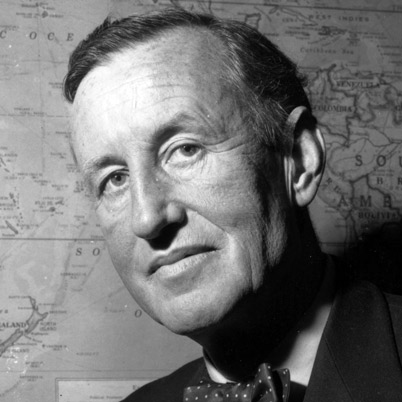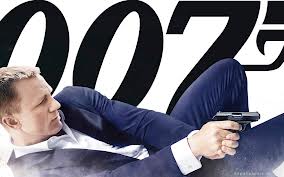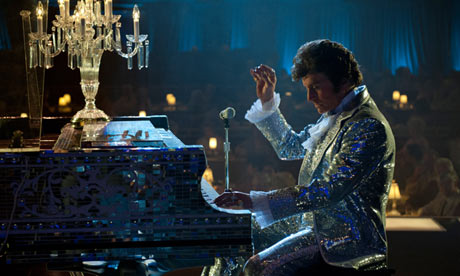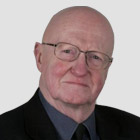By Paul Carline, Associate Editor,
The Greanville Post
"To Empire, with Love"

Daniel Craig is the latest James Bond. But who does this durable agent truly serve?
It’s said there are few safer bets in Hollywood than a Bond film.The latest offering in the extremely lucrative Bond franchise - “Skyfall” - has already broken box-office records, taking some $87.8 million in its first weekend in the USA, and easily covering its $200 million production costs in the first two weeks. So far, the Eon Productions series has grossed $4,910,000,000 (over $12,360,000,000 when adjusted for inflation) worldwide, making it the second highest grossing film series after “Harry Potter”.
In a world in which active compassion for our fellow humans was the norm, would such extravagances be tolerated? A question at least worth asking. But I’ll leave it open. I’m going to tackle the simpler question as to whether anything of consequence lies below the surface of the seemingly harmless escapism of the 007 movies, and in particular “Skyfall”.
A little background for those (few? many?) who are perhaps blissfully ignorant of James Bond. The original books - 15 of them - were written between 1953 and 1964 by Englishman Ian Fleming. He had a privileged upbringing and a very varied professional career pre-war. In 1939, he became the personal assistant to the British director of naval intelligence and was used as his liaison officer with other sections of the government's wartime administration, such as the Secret Intelligence Service, the Political Warfare Executive, the Special Operations Executive (SOE), the Joint Intelligence Committee and the Prime Minister's staff.
Fleming also worked with Colonel "Wild Bill" Donovan, President Franklin D. Roosevelt's special representative on intelligence cooperation between London and Washington. In May 1941 Fleming traveled to the United States, where he assisted in writing a blueprint for the Office of the Coordinator of Information, the department which turned into the Office of Strategic Services and eventually became the CIA. In 1942 Fleming was instrumental in forming a commando group tasked with seizing German documents close to or even behind the enemy line. In 1945 Fleming had a house built in Jamaica. It was named “Goldeneye” and was where all his Bond novels were written. It took him only two months to write the first one: “Casino Royale”.
It’s interesting that Fleming said that he had chosen the name “James Bond” because it was “the dullest, plainest-sounding name I could find”, and that Bond would be “a neutral figure”: “Exotic things would happen around him [but he himself would be] “an anonymous blunt instrument wielded by a government department”. In fact it was not until the penultimate novel “You Only Live Twice”, published in 1964, that Fleming bothered to include any biographical details about Bond - giving him a Scottish father and a French mother, both killed in a mountaineering accident when “James” was 11 years old. Their Scottish home is called Skyfall.
The young Bond is then brought up by an aunt in England and briefly attends the famous Eton public school (as did Fleming), before being “sent down” (expelled) for having - at the age of 12 or 13 - had some kind of sexual relationship with a maid. He is then sent to another public school - Fettes College in Edinburgh - at which British Prime Minister Tony Blair would also be educated (British “public schools” are of course the opposite of being “public”; they are in fact expensive private schools and a very important part of the British establishment). Bond’s Scottish background plays a significant role in “Skyfall”.
For anyone wanting more detailed information about Fleming and the stories, the Wikipedia entry on Fleming is excellent. In addition to the biographical detail, the entry examines some of the “major themes” of the books. It notes:
“The Bond books were written in post-war Britain, when the country was still an imperial power. As the series progressed, the British Empire was in decline; journalist William Cook observed that "Bond pandered to Britain's inflated and increasingly insecure self-image, flattering us with the fantasy that Britannia could still punch above her weight." This decline of British power was referred to in a number of the novels; in From Russia, with Love, it manifested itself in Bond's conversations with Darko Kerim, when Bond says that in England, "we don't show teeth any more—only gums." The theme is strongest in one of the later books of the series, the 1964 novel You Only Live Twice, in conversations between Bond and the head of Japan's secret intelligence service, Tiger Tanaka. Fleming was acutely aware of the loss of British prestige in the 1950s and early ‘60s, particularly during the Indonesia–Malaysia confrontation, when he had Tanaka accuse Britain of throwing away the empire "with both hands".
Jeremy Black points to the defections of four members of MI6 to the Soviet Union as having a major impact on how Britain was viewed in US intelligence circles. The last of the defections was that of Kim Philby in January 1963, while Fleming was still writing the first draft of You Only Live Twice. The briefing between Bond and M is the first time in the twelve books that Fleming acknowledges the defections. Black contends that the conversation between M and Bond allows Fleming to discuss the decline of Britain, with the defections and the Profumo Affair of 1963 as a backdrop. Two of the defections had taken place shortly before Fleming wrote Casino Royale, and Fleming's biographer Andrew Lycett observes that the book can be seen as the writer's "attempt to reflect the disturbing moral ambiguity of a post-war world that could produce traitors like Burgess and Maclean." (1)

Ian Fleming, a gent of the Old School felled by a heart attack at 56—the family scourge. He knew MI6 from within and invested Bond with many of his real-life traits: heavy smoking, boozing and more than a fair appreciation for women. Like most men of his class and generation, he did not question Britain's equivocal role in the world, nor her close association with the rising American empire. Worst of all, perhaps unwittingly he contributed to a grand whitewash of sinister ops by Western intel agencies across the world.
After playing on postwar anti-German sentiment in novels such as “Moonraker” (1955) and “For Your Eyes Only” (1960), Fleming first exploited the Cold War “Russian threat” - embodied in SMERSH (meaning “death to spies”) - and then created the supposed international terrorist group SPECTRE (in Thunderball, 1961), permitting the depiction of "evil unconstrained by ideology".
“Skyfall” relates to all this in sometimes perplexing ways. To begin with, there is very little overt ‘geopolitical context’ - a criticism made of Fleming’s ‘Bond’ stories by none other than John le Carre. The only exceptions are, firstly, in relation to the computer hard drive - containing the names and aliases of all the “NATO agents” who have infiltrated foreign terrorist organisations - which the “villain” (an ex-MI6 agent called Raoul Silva) has somehow managed to obtain i.e. it locates MI6 and by implication Britain firmly within the NATO context; and secondly in a very significant speech by ‘M’ towards the end of the film which bears little direct relationship to the storyline. I shall come back to this. There is in this also a sort of connection to the theme of defection mentioned above: the “villain” is presented as a renegade spy who has become some kind of international cyberterrorist. Yet his “defection” was seemingly an enforced one - he was effectively betrayed by his MI6 boss ‘M‘ - and his ‘terrorist’ actions (including blowing up part of the MI6 headquarters in London) appear to be largely motivated by his desire for personal revenge on ‘M’, whom he accuses of having condemned him to years of imprisonment and torture after he had been ‘sacrificed’ in a spy exchange deal with a foreign power (China).
There is - perhaps surprisingly - a welcome absence of any direct reference to the concocted ennemi du jour which replaced Soviet Russia in the 1990s as the “devil incarnate”: a ‘jihadist’ Islamic fundamentalism bent on destroying the West, though one could suppose it to be (almost subliminally) implied in the speech by ‘M’ quoted below. It has even been proposed that the Silva character is meant to suggest Wikileaks founder Julian Assange - a hero to some, a “cyberterrorist” to others; and for some a CIA/MI6 stooge.
Compared, for example, to the in-your-face title sequence of the current series of the American TV drama Homeland - with its catalogue of film and audio clips all relating to America’s alleged major “terrorist” events, Skyfall is disarmingly reticent, with historical references being implied rather than stated; as, for instance, in the scene in which Silva, being chased by Bond in some deserted underground space below London, detonates a charge which brings down the ceiling, leaving a large hole through which a London Tube train then dramatically plunges - a fairly obvious reminder of the “terrorist” attack on three Tube trains in July 2005 (allegedly carried out by four young “homegrown” Islamic fundamentalists, but which the evidence suggests was in reality a “false flag” event, almost certainly - and ironically, in terms of the film - involving both MI5 and MI6).
I’ll briefly mention a few elements in the film which seem to me to have a wider resonance. When the ‘resurrected’ Bond resurfaces (literally - he is shown in the pre-title sequence apparently drowning after plunging off a high bridge into the sea, having been accidentally - and seemingly fatally - shot by a fellow MI6 agent) he appears (improbably) in ‘M’’s room, standing in the shadows by the heavily-curtained windows (we are not meant to ask how, with neither money nor passport, he has made his way half way across the world and entered what must be one of the most heavily protected houses in the country).
THE BULLDOG: the squatting china bulldog with the Union Jack painted on its back which sits on M’s desk wasn’t made specially for the film. The original “Bulldog Jack” design dates from 1941 and is a piece still produced by the Royal Doulton company. The company’s website notes that “due to very high demand we are now out of stock” - no need to guess why (the new range of “Jacks” have an 007 backstamp). If you want one, you will have to wait until February 2013, when the 3.75” high model will be available again at the ‘royal’ sum of £50.
Bond’s creator, Ian Fleming, was an ardent reader at a young age of the “Bulldog Drummond” novels written by Herman Cyril McNeile between 1920 and 1954. The Wiki entry reads: “The Bulldog Drummond stories follow Captain Hugh "Bulldog" Drummond, DSO, MC, a wealthy man who was an officer in the "Royal Loamshire Regiment", who, after the First World War, spends his new-found leisure time as a private detective. It begins when he places an advertisement in the local newspaper: “Demobilised Officer finding peace incredibly tedious would welcome diversion. Legitimate if possible; but crime of a humorous description, no objection. Excitement essential.” Drummond is a proto-James Bond figure. The earlier film portrayals of Bond, especially in the Roger Moore incarnation, certainly played up the humorous angle. Daniel Craig’s ‘Bond’ is altogether more intense.

The heroes in Lily Pad Roll are truly multidimensional, and in purpose much at loggerheads with Bond's true mission.
A ‘blunt instrument’ does what it’s told, of course, unquestioningly; it has no conscience. In a Pravda article of 1965, the author writes that: “James Bond lives in a nightmarish world whose laws are written at the point of a gun, where coercion and rape are considered valour and murder is a funny trick ... Bond’s job is to guard the interests of the property class and he is no better than the youths Hitler boasted he would bring up like wild beasts to be able to kill without thinking”. John le Carre said that Bond was more like an “international gangster”. There is still some truth in this analysis: MI6 exists to protect the (often illegal) interests of the elites, and Bond still kills the ‘villains’ without compunction (as, presumably, do real-life agents of MI6 and other secret services), but in Craig’s Bond we are given a more ‘human’ spy - less human, to be sure, than George Smiley and a far cry from the deeply introspective, self-questioning humanity of the ‘good spies’ in Gaither Stewart’s “Europe Trilogy”.
The Russians apparently called wartime British prime minister Winston Churchill the “British Bulldog” - and it has to be admitted that there is some facial resemblance between the two.
After the bombing of the MI6 headquarters in Skyfall, MI6 decamps to what is described as Churchill’s underground wartime bunker system.
 At the end of the film, Bond is presented with a parcel containing something that ‘M’ has bequeathed him in her will: it’s the china bulldog. An American reviewer writes that this “four-legged twin of Winston Churchill and talismanic symbol of British tenacity, features prominently. Hence, a ceramic bulldog improbably survives the explosion in M’s MI6 office. M wills the bulldog to Bond. When Bond unwraps M’s symbolic bequest, the audience in my west Texas theatre erupted in cheers and applause.” The symbolism is clearly understood.
At the end of the film, Bond is presented with a parcel containing something that ‘M’ has bequeathed him in her will: it’s the china bulldog. An American reviewer writes that this “four-legged twin of Winston Churchill and talismanic symbol of British tenacity, features prominently. Hence, a ceramic bulldog improbably survives the explosion in M’s MI6 office. M wills the bulldog to Bond. When Bond unwraps M’s symbolic bequest, the audience in my west Texas theatre erupted in cheers and applause.” The symbolism is clearly understood.
The last scene of the film shows Bond standing solidly, legs apart in a defiant - Churchillian? - posture, on the roof of MI6, looking out over the skyline of London, and flanked on his right by a large Union Jack. We are clearly meant to identify with the flag.
M’s ADDRESS: As already mentioned, the political context of Skyfall is fairly unclear, even confused. Only once it is expressed in any kind of coherent way. When Silva reveals the identities of a number of British agents, they are captured and killed and ‘M’ is summoned before a parliamentary inquiry at Westminster to account for herself. In her defence she states:
“Our enemies are no longer known to us. They don’t exist on a map. Our world is not more transparent, now. It’s more opaque. That’s where we have to fight. In the shadows.”
She then quotes from Tennyson’s poem “Ulysses”, which she says was her father’s favourite poem:
“Tho’ much is taken, much abides; and though
We are not now that strength which in old days
Moved earth and heaven; that which we are, we are;
One equal temper of heroic hearts,
Made weak by time and fate, but strong in will
To strive, to seek, to find, and not to yield.”
The poem has clear resonances for the self-understanding of a Britain - more particularly an England - which is (once again) suffering a crisis of identity. It also relates directly to Bond in ‘Skyfall’. When he reappears, he has certainly been “made weak by time and fate”. But his will is strong: though he fails the fitness and pistol shooting tests, he is able to return to active duty because ‘M’ lies about the results.
When they first meet, Silva taunts Bond with the words: “England. The Empire. MI6. You’re living in a ruin”. Out of the mouths of renegade MI6 agents ... This is far closer to the truth than many would wish to admit. The new crisis has less to do with the loss of empire and more with a widespread sense of purposelessness and anomie: tied to NATO but unsure of its “special relationship” with the US; swept up unwillingly into America’s imperial wars - based in part on lies in which Britain, in the person of Tony Blair, was centrally implicated; in a strange love:hate relationship with the rest of Europe; looking enviously at the economic might of Germany, the real powerhouse of Europe, solidly based in the engineering skills which were once the pride of Britain; subconsciously aware of the fragility of its own economy, masked for the moment by the Bank of England’s ability to print money on demand, like the Federal Reserve in the US; and threatened by the break-up of disunited “United Kingdom”, with Scotland pushing hard for an independence which might drag Wales and Northern Ireland in its wake, leaving England stuck in its outdated monarchical past.
All of this has to be denied or suppressed and the fiction maintained that Britain is still “Great”. That false sense of greatness is something it shares with the US, and for similar reasons - collapsing economies and crumbling social cohesion, with the growing realisation by more and more people that the system works for the interests of the few, not the many. In that context, the Bond stories can be used as an effective propaganda weapon, part of the agenda to protect the establishment - including the ‘useful’ monarchy - through the manufactured fear of “unknown enemies” who lurk “in the shadows”.
It’s the same old ruse, admitted in 1945 by Hermann Goering:
"Why of course the people don't want war ... But after all it is the leaders of the country who determine the policy, and it is always a simple matter to drag the people along, whether it is a democracy, or a fascist dictatorship, or a parliament, or a communist dictatorship ... Voice or no voice, the people can always be brought to the bidding of the leaders. That is easy. All you have to do is to tell them they are being attacked, and denounce the pacifists for lack of patriotism and exposing the country to danger. It works the same in any country."
The London Olympics connection:
As part of the four-hour-long opening ceremony of the 2012 Olympics in London, a short film commissioned by the BBC and directed by the ceremony designer Danny Boyle (“Trainspotting”, “Slumdog Millionaire”) is shown (on TV and on screens to the spectators in the Olympic Stadium; the worldwide audience was estimated at 900 million). Daniel Craig - in classic Bond attire - arrives at Buckingham Palace in an iconic black London cab. He mounts the grand staircase, passing exactly between two corgi dogs (one of which performs a full roll) before being admitted to the Queen’s private room by one of the Queen’s servants. Bond coughs discreetly to attract the Queen’s attention (she is sitting with her back to him at a writing desk). She eventually turns and greets him with “Good evening, Mr. Bond”.
They depart together, followed by the corgis, and are apparently seen climbing aboard a (British made) helicopter, which takes off and flies across London towards the Olympic stadium. On cue, various individuals - a black cab driver with a Union Jack painted on his face, for instance - and groups turn to wave. The statue of Winston Churchill is digitally animated to make him appear to wave his walking stick at the helicopter. The ‘copter hovers above the stadium and two figures are seen to exit it. Their Union Jack parachutes open and they eventually land alongside the stadium (both figures are, of course, stuntmen). The Queen is then seen to enter the stadium, together with her husband, and take her seat. The entire sequence is accompanied by ‘atmospheric’ music: two pieces by Handel (The Arrival of the Queen of Sheba and the music for the Royal Fireworks), the theme music of the film “The Dam Busters” (about the RAF’s destruction in WWII of two dams in Germany using the “bouncing bomb” invented by Barnes Wallis), and finally the most famous 007 theme.
All in all, a very clever combination of highly evocative icons - not forgetting a commercial pre-launch boost for “Skyfall” and the Bond brand (of course, in the way they are exploited, for nationalistic and other purposes, you could say that the Queen and wider Royal Family are also a brand). The film was given the title “Happy and Glorious” - words from the national anthem relating to the monarch, but presumably intended to be applied more widely to Britain as a whole, which with notable exceptions - such as the Olympics, when Britain certainly “punched above its weight” - is neither happy nor glorious. The film was commissioned by the BBC - the propaganda voice of the British establishment.
The opening ceremony also made much of Blake’s “Jerusalem”. The musical setting of the poem is often seen as Britain’s unofficial national anthem. The poem was inspired by the apocryphal story that a young Jesus, accompanied by his uncle Joseph of Arimathea, a tin merchant, travelled to what is now England and visited Glastonbury during Jesus' lost years. A model of the famous hill in Glastonbury - Glastonbury Tor - was created for the ceremony. The legend is linked to an idea in the Book of Revelation (3:12 and 21:2) describing a Second Coming, wherein Jesus establishes a new Jerusalem. The Christian Church in general, and the English Church in particular, used Jerusalem as a metaphor for Heaven, a place of universal love and peace. In the most common interpretation of the poem, Blake implies that a visit by Jesus would briefly create heaven in England, in contrast to the "dark Satanic Mills" of the Industrial Revolution. No ‘dark mills’ now - but there’s no shortage of dark satanic intrigues and machinations.
In the final paragraph of his programme notes for the ceremony, Danny Boyle writes:
“But we hope that through all the noise and excitement you’ll glimpse a single golden thread of purpose – the idea of Jerusalem – of the better world, the world of real freedom and true equality, a world that can be built through the prosperity of industry, through the caring notion that built the welfare state, through the joyous energy of popular culture, through the dream of universal communication. A belief that we can build Jerusalem. And that it will be for everyone.”
Fine words, but freedom and equality are not on the agenda of those who pull the strings - the real “enemies in the shadows”. We should also remember that a ‘new Jerusalem’ is also a central aim of Zionism (the peculiar 2012 Olympic logo was widely seen as a veiled spelling of the word ZION). In the utterly un-Christian, so-called “Christian Zionism”, when Israel has rebuilt Solomon’s Temple (necessitating the destruction of the Muslim Dome of the Rock) after having finally completed its aim of ‘cleansing’ the whole of Biblical Palestine of its original Arab - and ironically mostly Semitic - population, this will be the sign of the ‘Second Coming’ and the beginning of the ‘end times’.
There was a very apt online comment on Boyle’s use of the idea of a ‘new Jerusalem’: “I’m not sure ‘building Jerusalem’ is the right language to use. It echoes the ‘shining city on the hill’ syndrome that gives legitimacy to US exceptionalism”. There’s more than a little of that wholly unjustified “we are special” delusion in Britain. The reality is that were it not for the Bank of England’s ‘right’ to print money (the same right as the Federal Reserve), Britain would long ago have joined Greece and Spain in the austerity camp. And instead of being a society which promotes “real freedom and true equality”, Britain has one of the lowest levels of social mobility (which equates with inequality) in the developed world.
In relation to ‘Skyfall’ i.e. to the role of the secret services, we need to remember that it was Britain’s MI6 which conspired with the CIA to set up the “stay behind armies” in Europe after WWII - paramilitary organisations trained and armed by the CIA and MI6 which carried out assassinations and bombings across Europe between 1969 and around 1982 which resulted in the deaths of at least 500 civilians, with many more left seriously injured. These were classic “false flag” events, blamed at the time on ‘the Communists’, with the aim of preventing left-wing parties from gaining political power, especially in Italy. (cf. Daniele Ganser’s “NATO’s Secret Armies: Operation Gladio and Terrorism in Western Europe). The European Parliament promised to set up full official inquiries in all the 17 or so countries where there had been these groups, but then failed to do so. As Ganser noted: “The dog barked but did not bite”.
Of course, there’s no reference in the Bond films to any such “false flag” activities, past or present, on the part of MI6. Bond and “M” and “Q” and the rest of them are all ‘nice‘ people whom we are supposed to believe are single-mindedly dedicated to saving us from terrorism, while in reality they are complicit in the alleged ‘terrorist‘ events, often setting up ‘patsies’ whom they can entrap, and in the propaganda lie that we are threatened by fanatical Muslims. ‘al-Qaeda‘ and all its many derivatives are inventions of the secret services - paid mercenaries in the war of fear against the general public. The Bond movies are not innocent entertainment. Whether the directors, producers, actors and others realise it or not, they are part of the cover-up of the dirty tricks the secret services are engaged in to subvert states and maintain the fiction of the “war on terror” - and thus part of the megalomaniac pursuit of world domination by those who stand in the shadows pulling the strings. Does ‘Bond’ contribute in any way towards the achievement of Danny Boyle’s idealistic hopes? I think not.
ABOUT THE AUTHOR
PAUL CARLINE considers himself self-deprecatingly as a “jack of all trades and master of none.” His career spans teaching music and German, work in special needs communities, store owner, direct democracy activist, and general truth campaigner (recent targets including pseudo-science, biblical mistranslation, state-sponsored false flag terrorism, and pseudo democracy). Now in hopefully graceful semi-retirement, Paul works sporadically as a writer, translator, editor, and musician. He authored the preface to the second volume of The Europe Trilogy: Lily Pad Roll. He lives in Scotland. He serves as associate editor with The Greanville Post and Gaitherstewart.com .
__________
SUGGESTED READING
(1) For further discussion of the world of Western espionage before and during the Cold War, see Subversive thrills: Where Le Carré doesn’t dare to tread, by William T. Hathaway and Paul Carline, and P. Greanville: Warnings about ugly, subterranean worlds .







